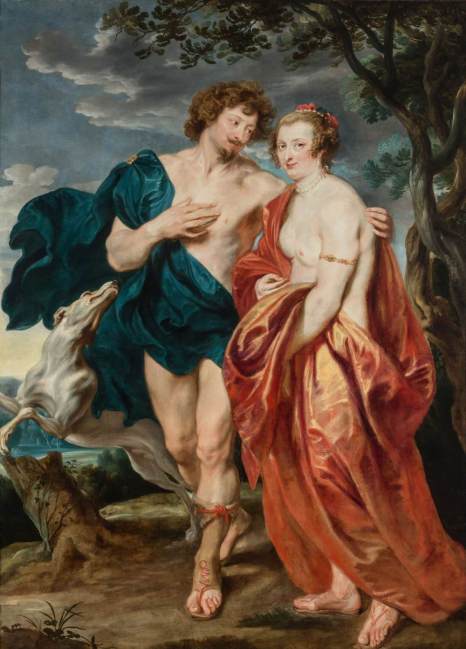What explains the enduring appeal of the Regency Romance?
Why has that period in history lent itself more than any other to our fantasies about courtship and social acceptance? The origins of its potency lie older and deeper than the comedies of manners written prolifically by Georgette Heyer, the doyenne of Regency Romance fiction, and the costume rom-coms of the film and movie industries of the last hundred years.
Regency Romance is written to a winning formula nowadays, some of it blissfully unconcerned with syntax or history, but millions of women had fallen in love with Classic Literature’s Mr Darcy for nearly two centuries before the BBC got him wet. Members of all sexes have obsessed over the period’s dead poets with a sense of connection that felt stronger than many real relationships. Many a girl and boy have thrilled to Byron’s “mad, bad and dangerous” celebrity, or pined to be the one to soothe Keats’ fevered forehead, rather than inadequate Fanny Brawne.
We are all touched by the Regency, even those of us who have never read a romantic novel or would know a pelisse if it arrested us.

John Arthur Douglas Bloomfield, 2nd Baron Bloomfield, already a career diplomat at the age of seventeen, a pillar of the Establishment trying desperately to look like poet, libertarian political writer and social outcast Lord Byron, painted at full Romantic throttle by Thomas Lawrence, 1819. (National Portrait Gallery. Image: Wikipedia).
The Regency created its own romantically sexy myth long before it was appropriated by later generations.
The Regency period looks more modern to us than either the preceding 18th century age or the following Victorian age. The style of clothes and short hairstyles are still around – even the men’s tight-fitting trousers have been revived as jeggings.
Regency architecture, interior and garden design still provide some of the most elegant home improvement options available today.
 Edmund Leighton: On the Threshold (1900). Manchester Art Gallery. Image source: Wikipedia
Edmund Leighton: On the Threshold (1900). Manchester Art Gallery. Image source: Wikipedia
Love the wrought iron and lead roofed porch. And his boots….
A late Victorian nostalgia for Regency style packaged the romance of consumerism, in which props and set dressing are more prominent than feelings. You’d never guess from later illustrations that there had been a war going on, in fact several wars, about ideology, trade, territory and ideas.
Women’s clothes in the neoclassical Regency period, for three decades after the French Revolution, were more comfortable, more symbolic of personal freedom, than later 19th and early 20th century fashions. By the late 1820s, tight lacing was back and got tighter. (Traditional stays had never really gone away for every woman in Regency times, and were superseded by the much-maligned corset which, correctly fitted, is far more comfortable and good for posture than its reputation allows. And some of us are comfortable and happier in high heels, just as some people have sea legs – but that’s for another battle at the Last Post.)
The female body of the following four generations was squeezed in and padded out, satisfying somebody or other’s fetishes, some of them as weird as Comic Con costumes.
At the time Edmund Leighton was turning out his chocolate box historical genre scenes, and C.E. Brock was producing his fairytale illustrations to Jane Austen, fashionable women’s bodies were trapped in S-shaped cages which they only started getting out of shortly before World War I. The Regency looked like a time of rationality and enlightenment in comparison.

One of the later (1907) watercolour versions of C.E. Brock’s original 1895 illustrations to Pride and Prejudice: the sugary colours signal the export of Jane Austen’s “two inches of ivory” world to the arch land of Regency Romance.
to be continued


